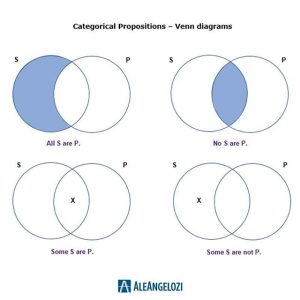What is it?
Aristotelian logic is a deductive logic system based on a fixed structure (i.e. argument) that contains two premises and one conclusion (i.e syllogism).
How does it work?
In this system, the arguments are composed by statements that are always categorical, statements that affirm or deny, totally or partially, the relation between two objects classes denominated subject and predicate.
A visual perspective of the relations between the terms of the statement is possible through the Venn Diagrams, this approach makes the logical calculus intuitive.

Before you start
Statements, generally, aren’t said in a categorical structure, so, it will be necessary to translate them to analyze them from the syllogistic perspective. During the translation is important to look with attention to the way how a class is described in the ordinary language, to guarantee a precise translation of the statement’s logic intention.
References
Baronett, Stan. Lógica: uma introdução voltada para as ciências / Stan Baronett; tradução Anatólio Laschuk. – Porto Alegre: Bookman, 2009.
Sites:
https://pt.wikipedia.org/wiki/L%C3%B3gica_aristot%C3%A9lica
https://plato.stanford.edu/entries/aristotle-logic/





